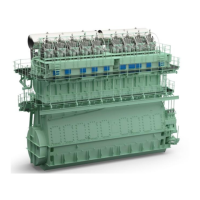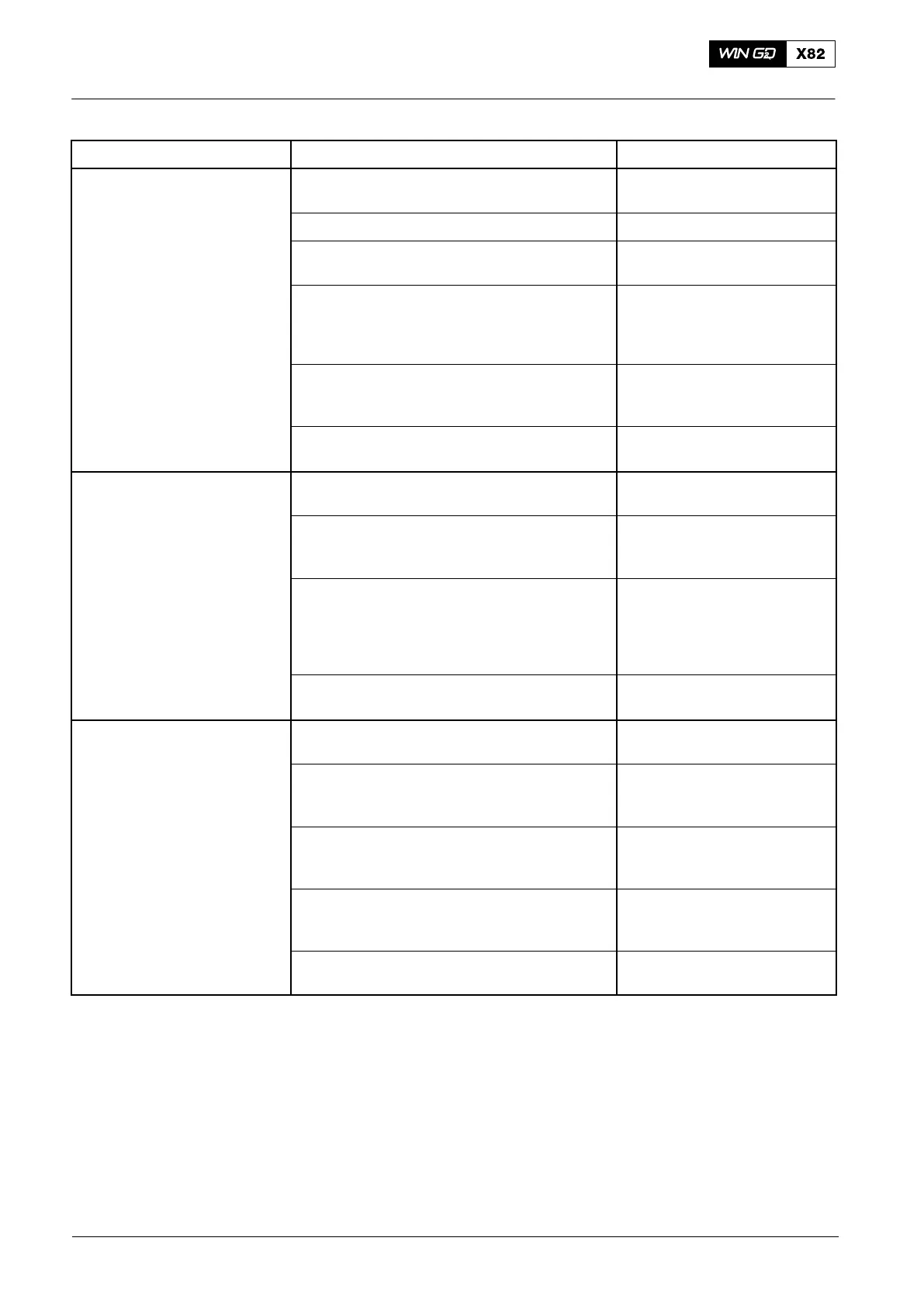Operation0820−1/A1
Winterthur Gas & Diesel Ltd.
2/ 7
Problem Possible Causes Procedure
The exhaust temperature of a
cylinder increases
The air flaps in the scavenge air receiver are
dirty or defective.
Clean, overhaul or replace
the air flaps.
The injection nozzles are worn. Replace with the spare kit.
The scavenge ports in the cylinder liner are
dirty.
Clean the scavenge ports.
There is a fire in the piston underside space. See 0450−1 Procedures to
Prevent Contamination and
Fire in the Scavenge Air
Spaces.
The exhaust valve has a leak. Grind the valve seat and head
(see the Maintenance
Manual).
The exhaust thermometer of a related
cylinder is defective.
Replace the exhaust
thermometer.
Exhaust temperature of a
cylinder decreases
Injection nozzles are in an unsatisfactory
condition. A nozzle tip is broken.
Replace the nozzle tip.
The related cylinder receives less fuel
because of a leakage in the high pressure
pipes or injection valves.
Grind the sealing faces or
replace defective parts (see
the Maintenance Manual).
The exhaust valve does not open. The
exhaust valve control unit or its hydraulic pipe
is defective.
Cut out the injection and
exhaust valve control unit of
the related cylinder (see
0510−1 paragraph 1 and
0520−1 paragraph 2).
The exhaust thermometer of the related
cylinder is defective.
Replace the exhaust
thermometer.
The engine speed decreases The speed setting from the speed control
system is decreased or not in the limits.
Do a check of the speed
control system.
The fuel injection quantity from the speed
control system decreased to prevent too
much load in heavy sea.
A procedure is not necessary.
Usual operation.
Hull resistance increased because of growth,
age of hull, propeller damage.
See 0070−1 The Relation
between Engine and
Propeller.
An injection valve is defective , an injection
pipe is defective.
Cut out or replace the related
part (see 0510−1 paragraph 1
and 0515−1 paragraph 3.3.2).
The air and exhaust gas pipes are clogged. See Scavenge air pressure
decreases.
2014
Irregular Operation

